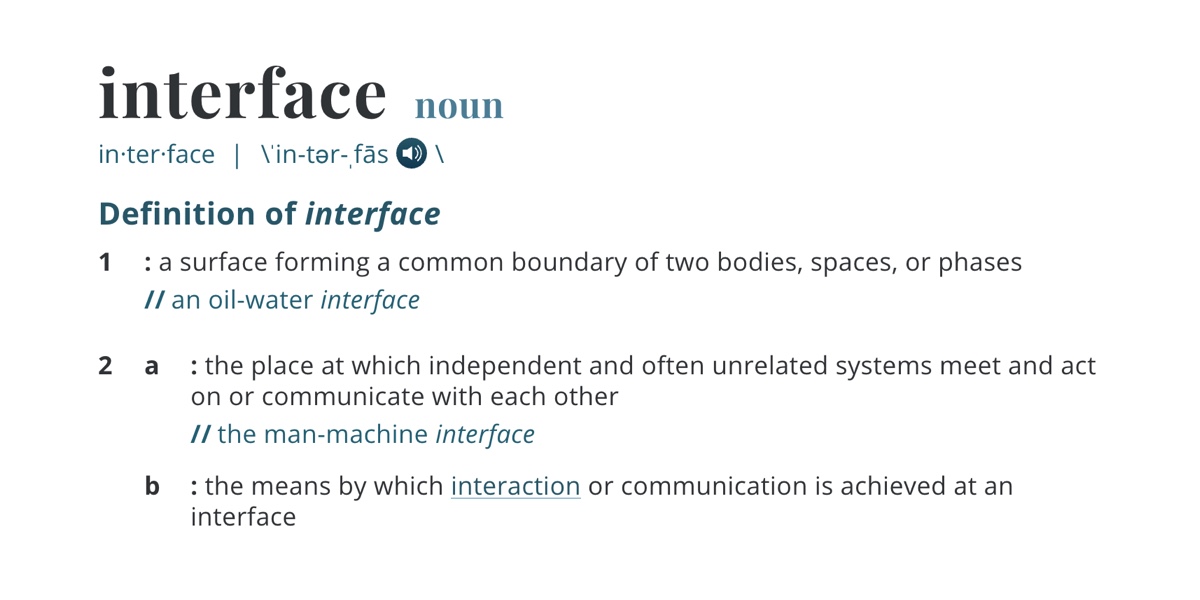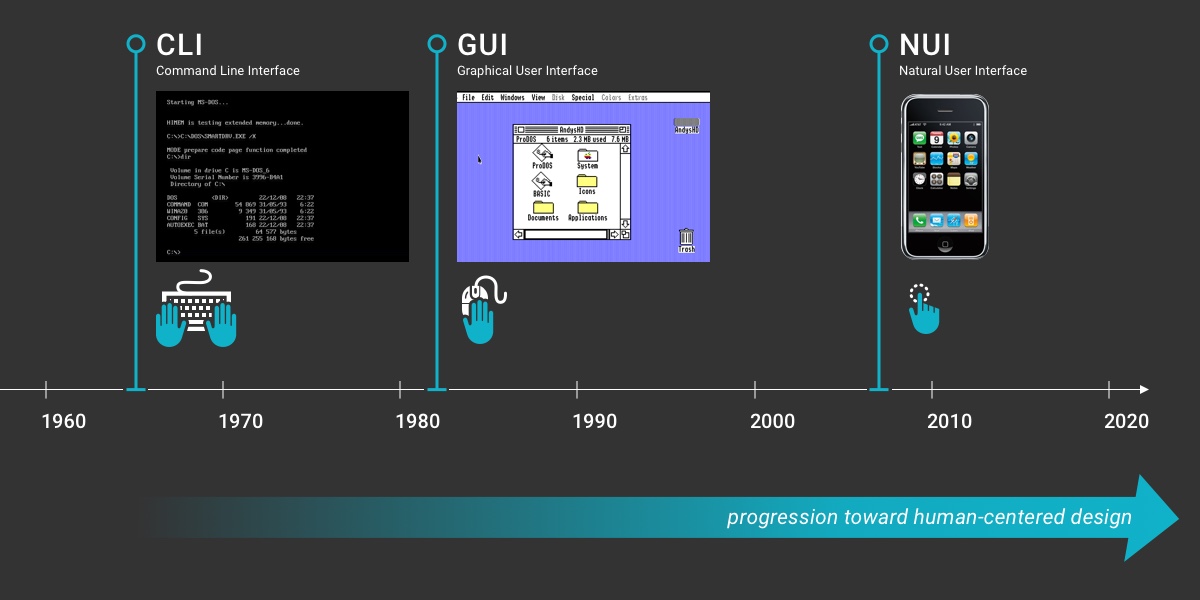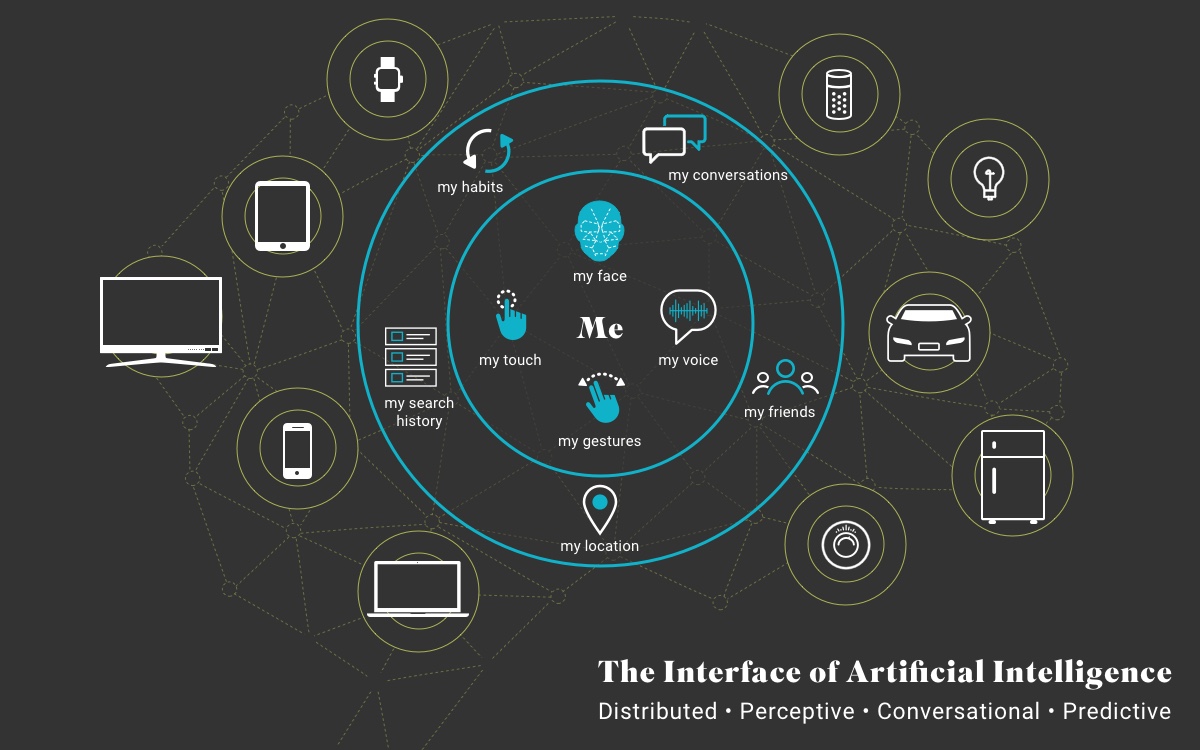Artificial Intelligence Needs a Design Makeover
An interface is a communication layer
User interface — or UI — can best be thought of as the communication layer between the real world and the digital world. It’s what allows us to access the digital reality that’s sitting ‘inside’ our devices. Therefore, a UI is not necessarily contained to a screen. Rather, it is defined as any point at which we as humans interact with with the digital world. So, when we talk to Alexa, even though there is no screen, we are using an interface.

The interface to the digital world has never been more important than it is today. And it has never been as broken.
First, we brought computers into our homes. Then, we brought them into our pockets. Now, we are bringing them into our minds.
Historically, the most radical shifts in how we interface with computers have come out of the design community. The first major revolution in user interface was in the 1980s with the introduction of graphical user interface (GUI). This innovation came out of Xerox PARC and then was improved upon by Apple computers in the 1980s. It ushered in the personal computer revolution.
Apple did it again in 2007 with the iPhone, creating in a shift to natural user interface (NUI) bringing in voice and touch in new, interesting ways. This helped us interface with the digital world ushered in the smartphone revolution.
If you look at the history of the progress of our relationship with computers, it has been a movement toward human-centered design. We have continuously improved upon the communication layer between the real world and the digital world to make the UI more and more natural and accessible to us. It is imperative that this trend continue.

Where have all the good designers gone?
We are in the middle of another seismic shift — the shift to AI. And there isn’t enough design leadership in this space. The major advancements in AI are being led by companies like Google, Amazon and Microsoft that are proudly and notoriously engineering-first companies rather than design-first companies. Designers are not leading the way and a human-centered focus for AI is mostly an afterthought. That can have real consequences —some merely inconvenient, some dangerous.
We are in the middle of another revolution. But, this one is being led by AI engineers and machine learning scientists. Not designers.
This means that while there is a tremendous amount of progress in machine learning algorithms and personal data curation, there is not enough progress in how to make data transparent, consumable and useful to end users. This can lead to something as extreme as a Facebook-Cambridge Analytica scandal. But, it can also just lead to uninspired design solutions that focus on sales or engineering concerns like refining search results, improving ad placements or auto-completing sentences. Where is the fun? The surprise and delight?
Transparency is key to good communication — let’s apply it to AI
For serious concerns — like data privacy and control — AI with a proper set of design layers could be doing much to help both end users and companies to understand and track data. A well-designed set of dashboards, for example, one for the individual and one for the company, could ensure the transparency and traceability of data pathways and map when data travels beyond its intended borders. While this is no easy task by any means, a design-first and human-centered approach can lead to solutions much needed and to date not adequately explored.
A design requirement for a data visualization dashboard would have led to a set of technical requirements that could have prevented the Facebook-Cambridge Analytica scandal.
AI also needs a design makeover for the more everyday concerns — like how to make it easier to hang out with our loved ones, make work more fun or inspire creativity or . And while these are not as hard, I would argue that the sheer ubiquity of these problems in our lives makes them just as important as the more serious concerns. And the sad part is that even though they are so much easier to solve, still it is barely being done.
After all, we are in a relationship. Let’s start acting like it.
For instance, when Alexa was first released a few years ago, one of the most talked about features was the shopping list. Really, a shopping list? At Particle, this fascinated us. What made that so special? One of the traits that stood out to us as singular, is that it allowed us to have a conversation with the digital world in a way more similar to the conversations we are having with each other — and more importantly — with our own minds.
The ‘oh man, I need to add laundry soap to the list’ that we mutter to ourselves while loading the washing machine could now be uttered to Amazon and it was taken care of for us. What a relief! Technology that was allowing us to communicate with it in an even more personal way — in a way that allowed us to bring it literally into our minds — and eased our minds in the process? Brilliant. Then, Amazon seemed to stop short. They have not continued this innovation in UI in the way we had hoped they would. While more information is now connected to our Alexa or other smarthome devices, the creativity about how we can interact with that information has stalled.

How fun would it be if we could converse with Google like we do with our own minds?
Companies like Amazon or Google or Microsoft — companies who are extremely smart and leading the way in AI — would be well-served to push hard on how AI ushers in wholly new ways for us to interface with the digital world.
For instance, how fun would it be if we could converse with Google in the same way that we converse with our own minds? We ask ourselves questions all the time like — what was the name of that Japanese restaurant I went to last summer? What was that article I was reading about writing styles for short fiction last month? The engineer would answer this by saying — we already have that in your search history! And while that might be technically true, it is not actually true.
Neither search history nor bookmarks are designed in a way that allows a person to easily and quickly get their hands on the information they need when they need it and in the way they think about it. What is sad is that it would be extremely easy for Google to facilitate this type of personal, conversational and helpful relationship with us. The AI layer is already there. It has been there for years.
They only need to design for it.